John Hurrell – 23 December, 2013
In these hyperfrenetic, shallow and diagonally aligned ‘trays' we analyse and mentally separate the interwoven or crisscrossing lines, pulling them apart and spatially assessing their position and distance. The tilted cavernous black background is mainly ignored as most of the forms tend to float near the pictureplane.
Auckland
Rob Gardiner
The Here and Now
13 December - 21 December 2013. 28 January - 5 February 2014
It is about three years since Rob Gardiner‘s earlier exhibition at Two Rooms, an immersive installation in the same upstairs space, but this current display is quite different: a series of eight drawn-on framed photos of wall reliefs. They’re photographs of projecting wall sculptures that have been digitally colour reversed, and then occasionally painted on (inside the outer glass).
These drawing/photograph/sculptures provide squiggly marks hovering in a dark field. The viewer investigates various combinations: bleached traces of the (at times) knotted and doubled original wire relief; its shadow photographed on the gallery wall; bits of what seems to be bound on pieces of rag (colour flipped); photographed pencil lines drawn on the gallery wall; painted lines on the glass hovering close to the viewer; shadows cast by those painted lines onto the photograph. Most of these images are in a Mondrianesque diamond form, some are lines in tangled, jumbled up ‘nests’, others have crosses or linear forms carefully separated and not touching.
So in these hyperfrenetic, shallow and diagonally aligned ‘trays’ we analyse and mentally separate the interwoven or crisscrossing lines, pulling them apart and spatially assessing their position and distance. The tilted cavernous black background is mainly ignored as most of the forms tend to float near the pictureplane. The jump in thinking from a background of white modernist walls to glass covered pitch black seems abrupt, making the new deep field look mystical, organic and vaguely alive. An enclosed, very different sort of ambience.
The presence of the glass here is a big thing as a transparent support, its separation and casting of a real shadow when painted on. The painted lines are painted more than drawn, and despite the photograph as the dominant support there is a sense these are a form of painting. Even though some of the forms (based on wrapped cloth) look like an odd form of collage. The coloured line applied on the glass is thick and slightly raw in texture. A hint of the granular.
Gardiner’s use of black I find a bit corny. It’s too obvious as a background and foil for colour. However with the shadowy ‘duplicated’ forms and wiggly bleached line effects I’m attracted to his use of logic and category making, as an extension of say Jonathan Lasker’s use of shape pairing. You keep comparing and looking for morphic doubles. And the knottier, chaotic, busier works tend to succeed more than the skimpy spidery ones. It’s nice to see the ominous black knocked back and spindly form cohering (along with delicate colour) and being more assertive. It will be interesting to see where Gardiner goes from here, if a more ‘material,’ overtly chromatic presence takes hold?
John Hurrell
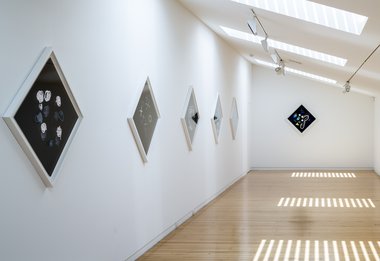
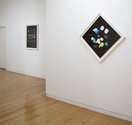
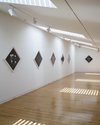

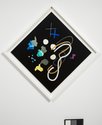
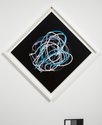
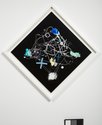
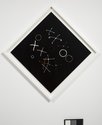
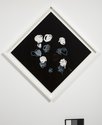
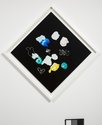
 Advertising in this column
Advertising in this column Two Rooms presents a program of residencies and projects
Two Rooms presents a program of residencies and projects
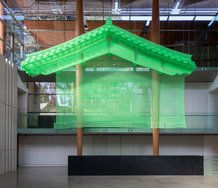
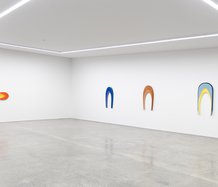
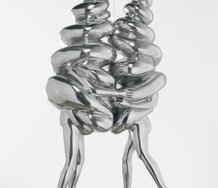
This Discussion has 0 comments.
Comment
Participate
Register to Participate.
Sign in
Sign in to an existing account.